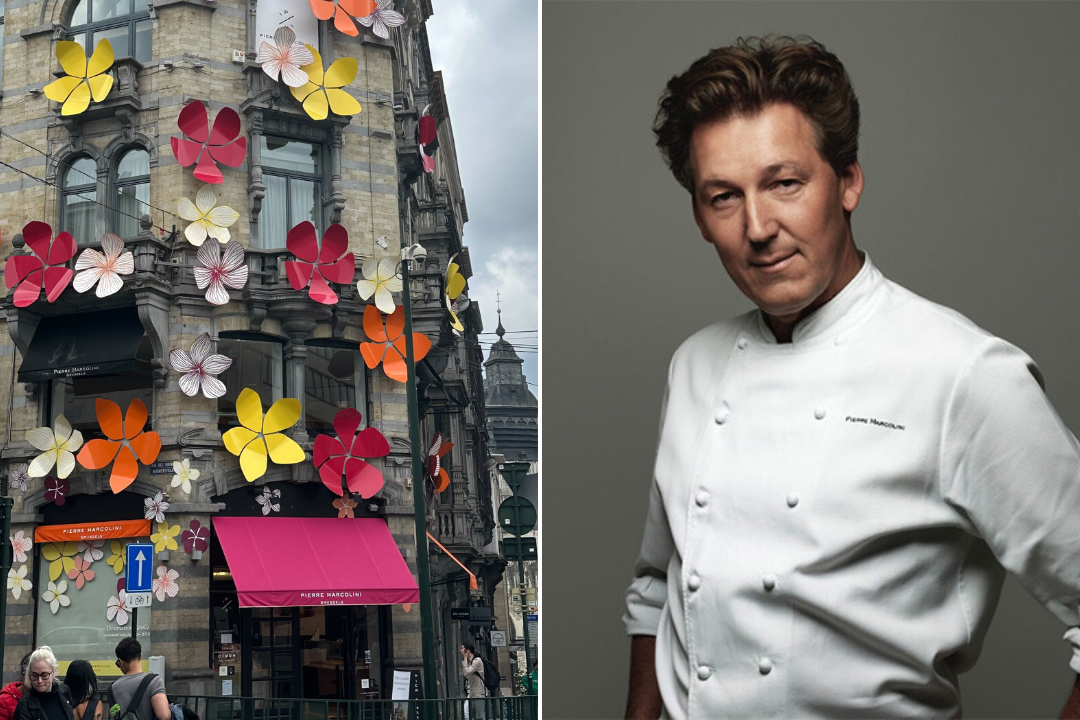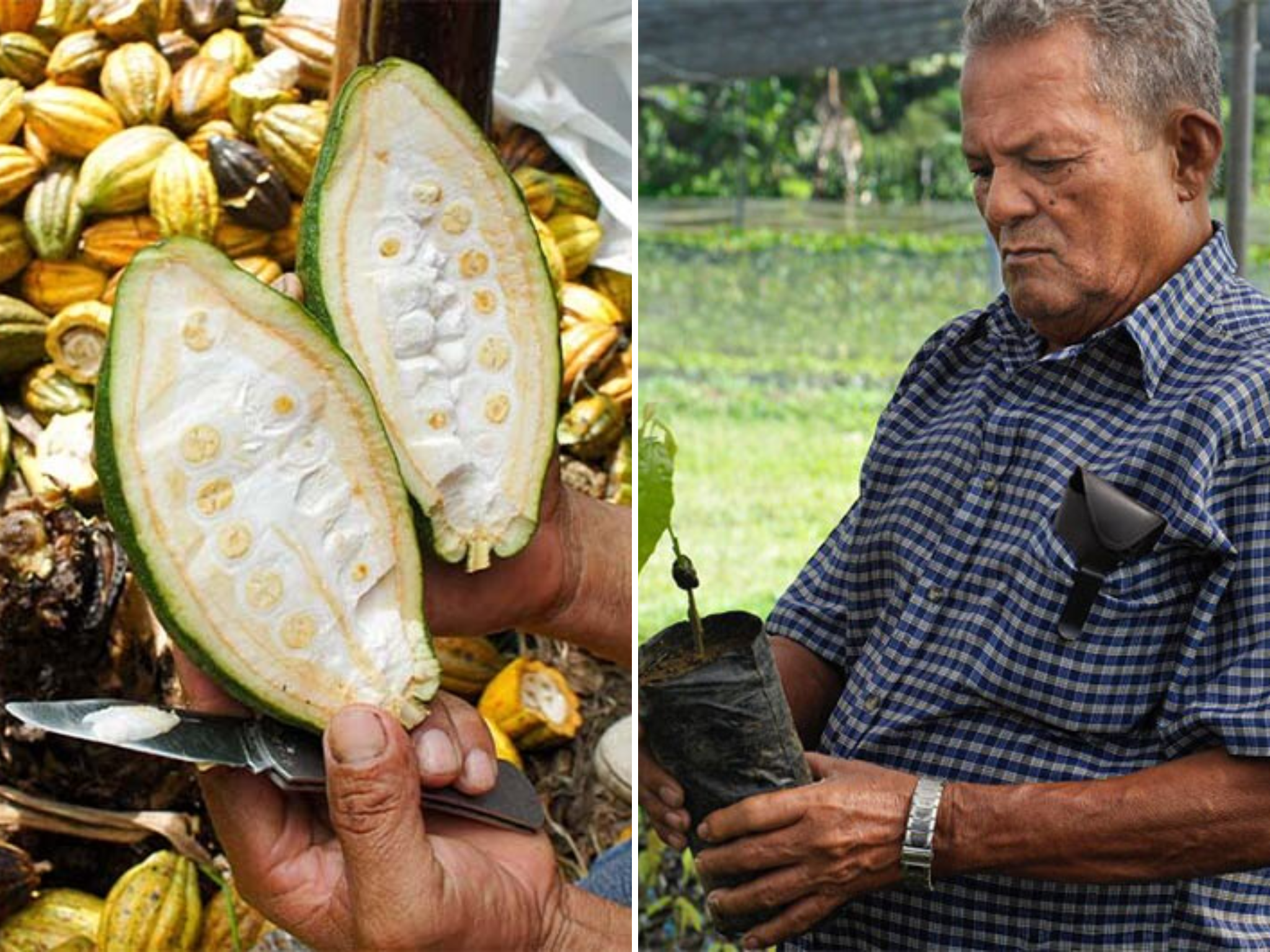Pierre Marcolini: The bean-to-bar Belgian chocolatier launches vanilla inspired summer collection
The Belgian chocolatier known for his maverick bean-to-bar approach has churned up ice creams for summer

Your support helps us to tell the story
From reproductive rights to climate change to Big Tech, The Independent is on the ground when the story is developing. Whether it's investigating the financials of Elon Musk's pro-Trump PAC or producing our latest documentary, 'The A Word', which shines a light on the American women fighting for reproductive rights, we know how important it is to parse out the facts from the messaging.
At such a critical moment in US history, we need reporters on the ground. Your donation allows us to keep sending journalists to speak to both sides of the story.
The Independent is trusted by Americans across the entire political spectrum. And unlike many other quality news outlets, we choose not to lock Americans out of our reporting and analysis with paywalls. We believe quality journalism should be available to everyone, paid for by those who can afford it.
Your support makes all the difference.Pierre Marcolini, of Italian descent but born and raised in Belgium, founded his eponymous chocolate company in 1995 and is now as ubiquitous a presence, at least in the Belgian capital, as some of the centuries-old chocolatiers like Côte d’Or, Leonidas or Neuhaus. The brand takes prime positions in beautiful heritage buildings across the city, plus pop-up ice cream carts and smaller biscuit shops.
The shops themselves are sleek and as pristine as the perfectly tempered pralines that are neatly lined up in the spotless glass counters of the Rue de Minimes boutique in Brussels. There is a definite air of luxury to the chic, pared back boutiques. I visited the shop to discover the brand and to find out how Pierre is leading the new wave of Belgian chocolatiers.
Pierre proudly champions the bean-to-bar movement, meaning everything beyond growing the beans is performed in-house to ensure quality but also ethicality. It’s sometimes difficult to see beyond PR spiel, especially with the proliferation of ethics-washing and what can only be described as chocolate’s bad reputation, but it seems that Marcolini is personally invested in sustainability and high standards for the people involved in growing the cocoa beans he uses. “We practice fair trade, ensuring a price that respects and rewards the efforts of these cocoa artisans,” says Marcolini.

Marcolini has made a name for himself by upholding high standards for chocolate in the face of threats such as sky-rocketing cocoa bean costs and the 2003 law allowing 5 per cent of chocolate to be made up of vegetable fat. The Belgian love affair with the confectionery began once Europe was introduced to the beans when they were brought back from Mesoamerica, which is now a region in southern Mexico and Central America. Chocolate fever peaked when huge supplies of cocoa beans were transported from the Congo in the early 20th century, which was at that time a colony of Belgium.
Slavery and child labour are still linked to many cocoa plantations in the world, especially in places like West Africa and South America, with large chocolate brands implicated. Dutch chocolate company Tony’s Chocolonely is one company calling out the appalling practice, highlighting the scandalous conditions in plain words on their packaging and with their tagline, “making chocolate 100% exploitation free”.
Marcolini is similarly committed to an exploitation-free chocolate industry, which is laid out in his charter. One commitment is that no child shall work in the plantations that grow the beans he uses. “We actively fight against child labour by promoting access to education for the youth in these communities,” explains Marcolini.
The plantation owners have all signed the charter, which also includes using natural herbicides and making sure that cocoa beans are grown sustainably and of high quality that can produce chocolate without bitterness even with a very high percentage of cacao. In the foreword to Marcolini’s book Belgian Chocolate: Bean to Bar Generation, food journalist and co-writer Michel Vinerdlin laments the term “dark chocolate” to describe a bitter-tasting alternative to “milk chocolate”.

He seems to speak to a conspiracy perpetuated by mass-produced chocolate companies to dilute the meaning of chocolate, that was once, despite being rooted in colonialism, a meticulous craft. He credits Marcolini with “shaking the cocoa tree” and leading the reinvention of Belgian chocolate-making, and perhaps most importantly, distancing it from the “unpleasant master-slave configuration, which reeks of exploitation”. The book details the new wave of Belgians who, through being involved in every aspect of the chocolate making process from bean to bar, are upholding rigorous standards for chocolate while simultaneously pushing its boundaries.
The Pierre Marcolini shop assistant I met with, who has been working for the brand since the mid-2000s, proudly explained that much like different grape varieties have an impact on the taste of wine, so does the cocoa bean. The brand uses growers from Peru, Madagascar, India, Cuba, Indonesia and even China, eight in total producing different varieties that impact flavour. Chocolates are then created with single varieties or blends like grapes with wine.
I tasted smokey notes in an 85% cacao praline (notably smooth, sweet and not a hint of bitterness or harshness to the flavour), sweet and sharp raspberry in the shape of a red heart praline and a meltingly soft chocolate-coated vanilla marshmallow as part of the brand’s summer collection, which also includes ice cream and cakes.
It’s hard to miss the vanilla flower-embellished shop fronts while walking around Brussels, as the Marcolini brand celebrates “Destination Vanille” for the summer. Synonymous with something bland or unimaginative, vanilla is often a neutral flavour to be adorned by something more exciting. However, the Maison’s grand cru Madagascar vanilla ice cream, churned in stores for a brief couple of months this summer, is rich, creamy and holds its own for flavour. What makes it so is the quality of vanilla hand-selected by the brand’s founder, who seems to have the world as his playground.
Pierre Marcolini chocolate and confectionery – including the summer special vanilla collection – are available to buy in the Marylebone shop and the Selfridges and Harrods concessions, or online at marcolini.co.uk
Join our commenting forum
Join thought-provoking conversations, follow other Independent readers and see their replies
Comments